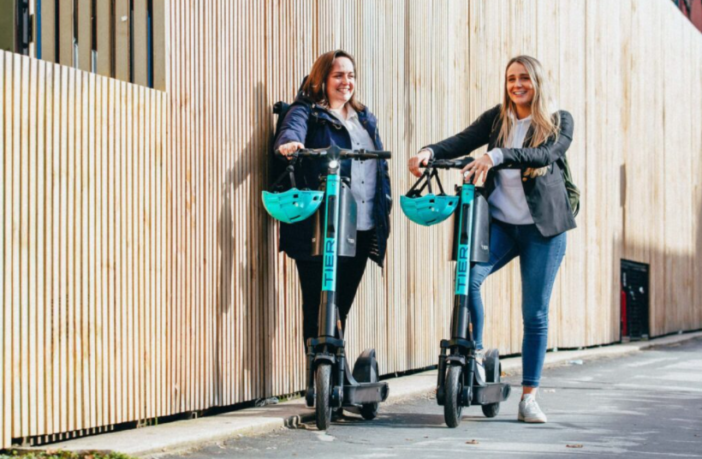Much more needs to be done to deliver the e-transport revolution and achieve our twin environmental goals of banning car and diesel sales by 2030 and achieving net-zero greenhouse gas emissions by 2050. E-transport writer Chris Price reports…
As in many areas of life, the pandemic has accelerated the pace of technological change. Video conferencing has become the norm for communication for many businesses, online shopping is now widespread among all age groups and new forms of transport are emerging to replace the polluting internal combustion engine.
However, much more needs to be done to achieve the UK Government’s ambitious goal of banning petrol and diesel car sales by 2030 as well as encouraging us all to cycle more and use new forms of transport, including e-scooters and e-bikes. Here, we look at five ways technology could help drive transport change in 2021 and beyond.
1) Encourage e-scooter use
COVID has highlighted the demand for personal transport as people shun tubes, trains and buses for public health reasons. Yet the UK remains one of the few places in Europe where it is still illegal to ride owned devices such as e-scooters on public highways and pavements.
Thankfully attitudes are beginning to change. Huw Merriman, chair of the Transport Select Committee, told MPs a few months ago that e-scooters had the “potential to become an exciting and ingenious way to navigate our streets”. There are also currently several e-scooter rental scheme trials taking place right across the UK. One scooter company TIER recently announced it would let users trade in their private illegal e-scooters for credits of up to £150 for its rental e-scooter scheme.
2) Develop EVs with much greater range
Clearly, electric vehicles (EVs) will play a crucial role in our future transport strategy. However, according to the RAC’s recent Report on Motoring only 9% of those surveyed say their next car will be an EV (Electric Vehicle). That’s up from 6% the previous year, but still very low.
A large part of the reluctance to go electric is ‘range anxiety’ – the fear of running out of power before reaching your destination. While the average stated range of the Top 10 Electric Vehicles is now 235 miles, drivers told the RAC they want an average of 375 miles before being convinced – roughly the distance of Edinburgh to Cambridge.
3) Improve vehicle charging infrastructure
Related to the above is the fact that many homes, especially in the UK’s towns and cities, don’t have their own drives to charge EVs. One innovative solution from YourParkingSpace.co.uk is to encourage people who have empty drives to rent them out to EV owners for parking and charging. It claims that around one in ten charging locations are now private driveways.
However, much more needs to be done to improve public infrastructure too. Shockingly a recent Freedom of Information request from Centrica revealed that local councils are only planning to install 9,317 electric car charging points between now and 2025 – an average of just 35 per council – meaning that private companies will have to do a lot more to cover the shortfall.
4) Make transport accessible for everyone
Undoubtedly, there is tendency especially among young urbanites to focus on the health benefits of personal transport, especially cycling. While this is undoubtedly true, for those who are disabled or who have mobility issues it’s not always easy to make the change to more sustainable forms of transport.
A recent survey from Zap-Map, the UK’s EV mapping service, found that one-third of disabled people surveyed had difficulty locating a charger to meet their needs with one in seven citing difficulties moving weighty charging cables. For those unable to use e-scooters, pavements and roads also need to remain safe places to walk and cross. E-scooter company TIER is currently working with Lazarillo, a GPS app for the visually impaired, to create no-go and go slow e-scooter zones as well as designing a sound alert to warn blind and partially sighted of an e-scooter’s approach.
5) Subsidise electric transport
Inevitably with all new technologies, prices start high and fall over time as economies of scale are achieved. However, if the UK wants to achieve its environmental goals then it needs to give those who want to do the right thing a helping hand, as other countries have done (Norway leads the world in EV adoption largely because of subsidies it offers).
According to the RAC Motoring survey, nearly 8 in 10 (78%) of UK motorists think EVs are too expensive. Half of drivers surveyed (53%) say they would like to see VAT on zero-emission vehicles either cut or abolished entirely, with a slightly smaller proportion (48%) favouring a scrappage scheme to make switching from a conventionally powered one to a battery-electric model affordable. Finally, three-in-10 motorists (30%) favour an increase to the current Plug-in Car Grant (PiCG) of £1,000, taking it up to £4,000.
Find more of Chris’s work here




